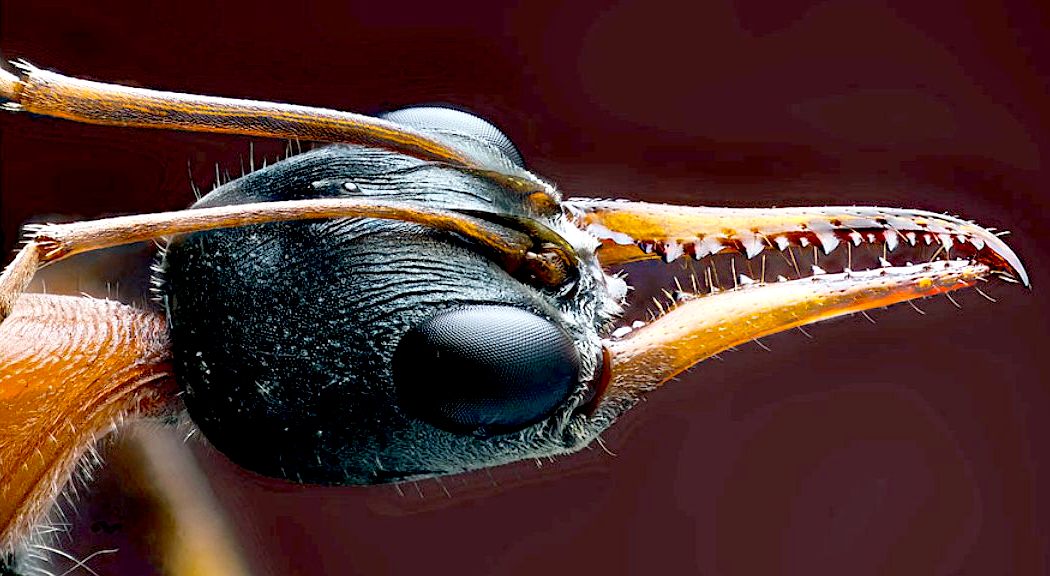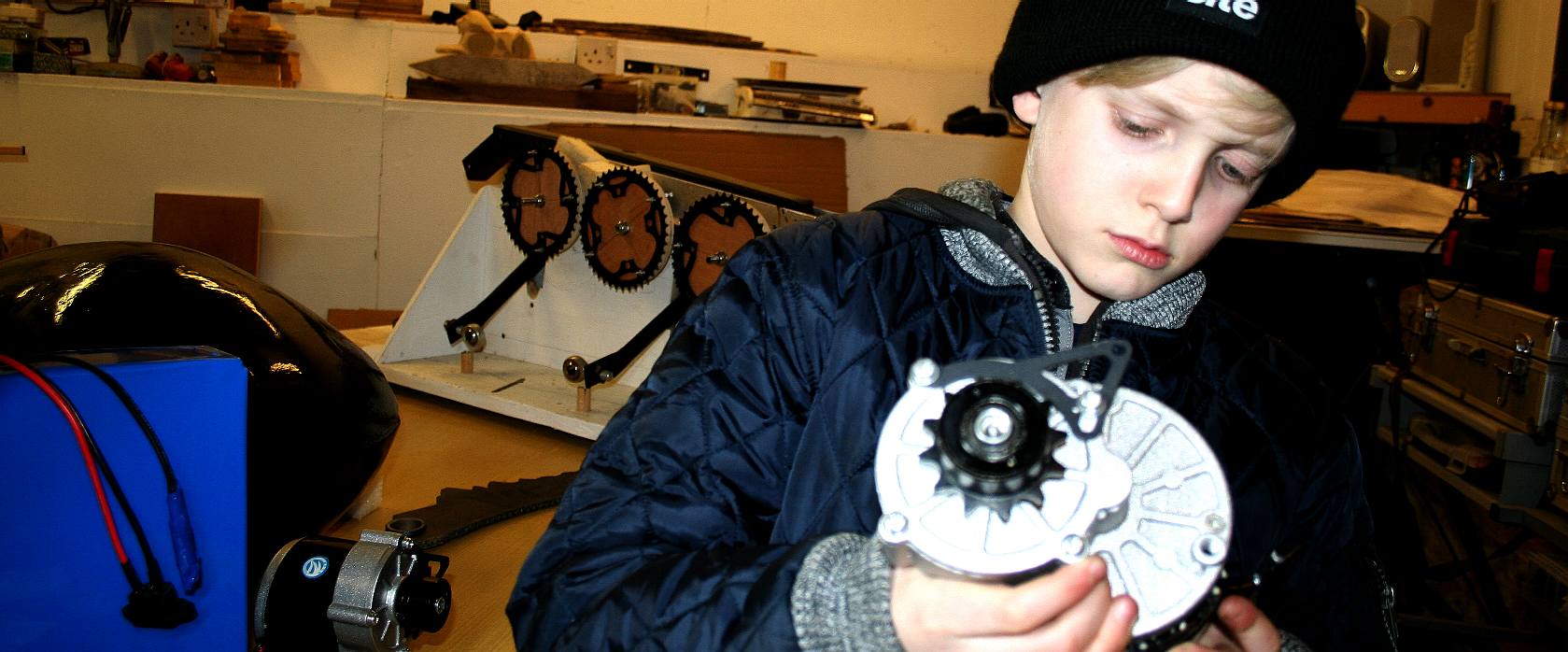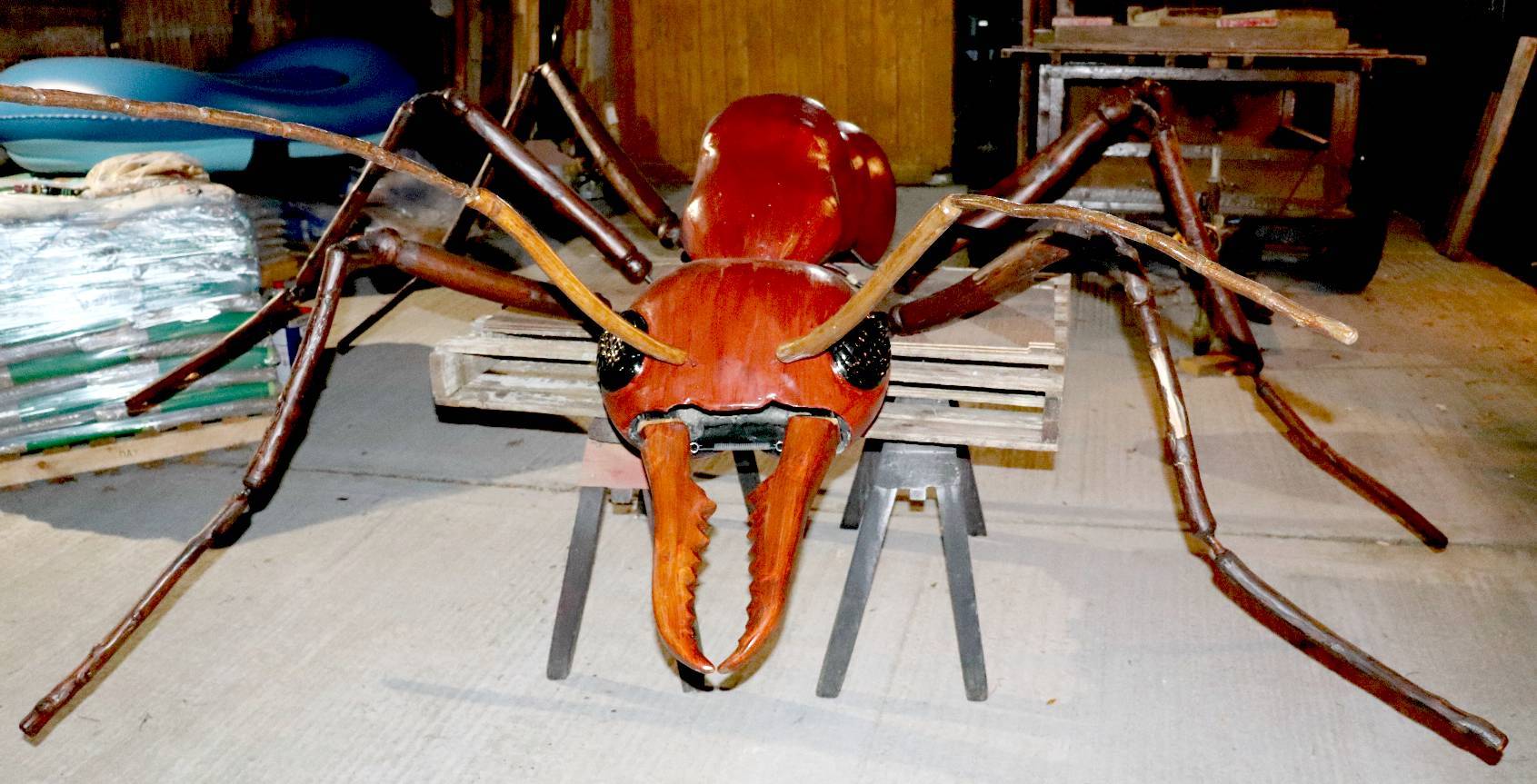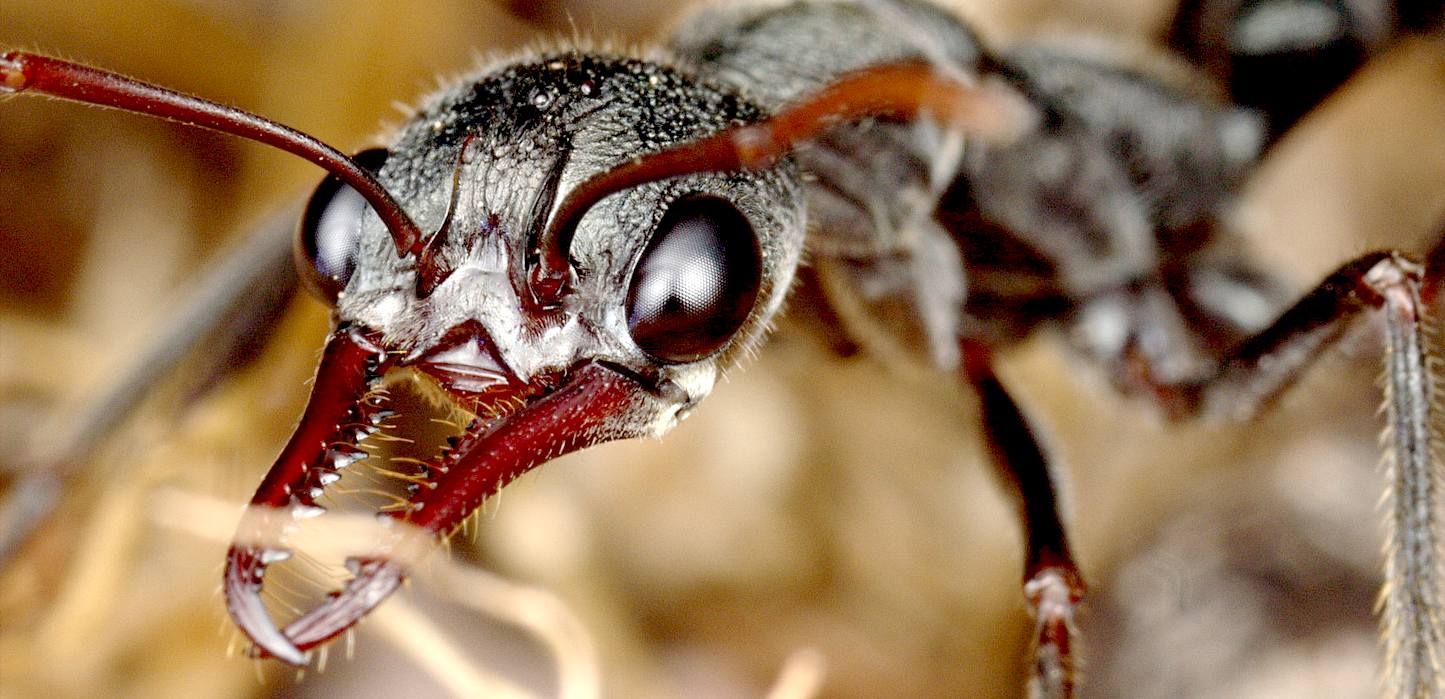|

ENDURANCE
- Is keeping your DinoBot on station for weeks at a time, without
exhausting the onboard energy storage and with sufficient reserves to
sprint into action at a moments notice and keep going for at least two
days at full tilt. How do we do
that?
BEYOND BATTERY POWER
- 10 NOVEMBER 2016
The Centre for Defence Enterprise (CDE) has up to £750,000 to invest in projects that investigate small and lightweight power generation that can be integrated into
robotic systems and carried by a person.
Projects with promising ideas could also be eligible to share a further £750,000 to improve them in a second phase.
The CDE is particularly interested in technologies that:
* improve endurance – stretching to days rather than minutes
* are lightweight and man-portable
* have high energy density – greater than 1,000 watt hours per kg
The military is increasingly looking to robotic and autonomous systems for many functions, including
re-supply, logistics and other military uses.
Use of autonomous systems is, however, limited by a lack of lightweight power systems. This competition is looking for innovative
power systems that could last around 48 hours.
The funding is under the Small Business Research Initiative (SBRI). Find out more about
SBRI and how it has helped businesses.
COMPETITION
INFORMATION
The competition opened on the 10th of November the deadline for applications
being 1 February 2017. The competition is open to any organisation and is for fully funded development contracts.
Phase 1 projects are expected to be worth between £40,000 and £80,000 and to last up to 9 months
a briefing event for potential applicants was to held on 1 December 2016.
JIM PENNYCOOK
Jim Pennycook joined the Centre for Defence Enterprise in 2008 as Military Adviser. He was appointed Head of Operations in 2013 following the completion of his service with the
Royal Air Force
(RAF).
His previous roles included:
* Military Adviser to MOD Director of Science and Technology Operations
* Military Adviser to MOD Director General (Research and Technology)
* Royal Air Force Harrier In-Service Support Contract Manager
* Staff Officer to the Deputy Chief of Defence Staff
* Harrier Configuration Manager, Headquarters RAF Logistics Command
Competition document: beyond battery power (10-11-16)
Contents
1. Beyond battery power
2. Background
3. Technology challenges
4. What we want
5. What we don't want
6. Exploitation
7. Important information
1. Beyond battery power
This Centre for Defence Enterprise (CDE) themed competition is looking for proposals for technologies that will reliably generate power for unmanned systems. These technologies need to be small, lightweight, modular and preferably have a low acoustic and/or infrared signature.
This competition will be briefed at the CDE Innovation Network event on 1 December 2016 and at a webinar on 5 December 2016.
Your proposal must be received by CDE by 5pm on Wednesday 1 February 2017. Your proposal must be submitted to CDE online.
2. Background
The provision of high-grade, high-resolution information is fundamental to establishing battlespace dominance. Much of this information is delivered by the soldier on the battlefield, often in dangerous and challenging situations. The dismounted soldier is progressively required to carry more sophisticated electronic hardware but with the additional burden comes extra risk. There is an increasing use of small Robotic and Autonomous Systems (RAS) reducing the risk and burden to military staff. However they still require an integrated electrical power supply for both movement and sensing. The Ministry of Defence (MOD) urgently needs light-weight, high-endurance, high-density electrical power for both RAS and other applications if the winning edge is to be maintained.
Through this CDE themed competition we are seeking novel and innovative technologies to provide electrical power that is smaller, lighter and longer lasting to address this problem.
3. Technology challenges
This CDE themed competition is looking for new technologies to deliver power for a number of military applications including but not limited to RAS and the dismounted soldier. For example MOD envisages a widening of RAS roles in resupply, logistics and other military functions. We want proposals for solutions to the challenge that are cost effective, reliable and robust. We’re interested in portable electrical energy delivery systems that will run for days rather than minutes and provide high density energy (to achieve 700
watts per hour per kg (Wh/kg)) but that are also small and lightweight. We’re not discounting a disposable or single use system, but it should be noted that any such system must be non-hazardous and environmentally acceptable. Despite the recognised benefits, operations using autonomous systems are limited owing to an absence of lightweight power systems in the 100 to 300W range. For example, you’d need several autonomous systems to maintain a capability for a typical 48 hour operation because they quickly run out of power. We’re looking for innovative engineering technologies and solutions to overcome this challenge of electrical power storage and delivery.
At phase 1 we’re looking for proposals where the complete system (including fuel and fuel storage if required) can achieve a target specific energy of at least 700 Wh/kg for 24 to 48 hours at representative power levels of 50 to 300 W.
Examples of target system weights and specific energies at different power levels and mission durations are given below.
|
Power (W) |
24hr system weight (kg) |
48hr system weight (kg) |
| . |
. |
. |
|
50 |
1.7 |
3.4 |
|
150 |
5.1 |
10.3 |
|
300 |
10.3 |
20.6 |
Table: Representative system weights (kg) and power levels (watts)
In phase 2 of the competition we aim to stretch this target, so your proposal should also provide an indication of how your technology could be further optimised to provide specific energies in excess of 1000 Wh/kg and ideally achieving 1500 Wh/kg.
We’re leaving the choice of fuel to you but you must include fuel storage in the system weight estimates. If your proposal uses an external fuel source you must remember to include this in the overall weight. Beyond the power levels and system weights described above there are additional characteristics that are beneficial to defence. We would particularly welcome proposals for technologies that also have low acoustic and low thermal signatures.
So, in summary this CDE competition seeks proposals for innovative technologies to address the challenge of providing reliable, sustainable high power electrical output lasting around 48 hours for RAS and other applications. Your proposed technology needs to be small, lightweight, robust and reliable.
4. What we want
We’re looking for phase 1 proposals that:
* can achieve a target specific energy density of at least 700 Wh/kg for around 48 hours
* consider a system approach and include a proof-of-concept demonstration
* consider the system integration aspects and how components can be integrated into system solutions
* are cost effective, reliable, robust and provide good value for money – these could include new technologies and advances in manufacturing techniques
* include detail describing how the
acoustic and thermal signature characteristics of your solution will be evaluated
* provide an indication of how the technology could be further optimised to provide specific energies in excess of 1000 Wh/kg, ideally achieving 1500 Wh/kg
You don’t have to provide the complete solution. Your proposed technology could offer part of, or an important step towards, the solution to the challenge.
We want a prototype system demonstrating the feasibility of your proposed concept. However, it is recognised that any prototype would require further development and refinement as part of the phase 2 programme of work. If a prototype system can’t be provided at the end of phase 1, you must demonstrate how the most critical components function for around 48 hours duration.
We’re looking for innovative proposals, but you should clearly state the technology developments needed to realise the innovation and the expected timescale for technology maturation.
We’ll encourage successful phase 1 projects to collaborate in any follow-on phase 2 projects.
5. What we don’t want
In this CDE competition we’re not looking for:
* proposals solely based on batteries or capacitors as these are already part of extant programmes
* nuclear technologies as these are considered environmentally unacceptable
* literature reviews
* paper-based studies
* marginal improvements to existing capabilities - we’re looking for innovation not
evolution
* proposals that lack a clear defence benefit
* demonstrations of existing off-the-shelf technologies, unless you propose a novel modification
6. Exploitation
This competition is part of a wider Defence Science and Technology Laboratory (Dstl) Disruptive Capability research project – which will feed into programmes such as Autonomous Systems Underpinning Research (ASUR).
All projects funded at phase 1 through this competition will be expected to take part in a networking event and a presentation day together with the other funded organisations. These events will provide an invaluable opportunity to meet other participants and discuss potential collaboration, with the intention of enabling a viable system demonstration at the end of the phase 2 activity. You should cost attendance at these events into your proposal.
The first event will take place in May 2017 at or near a Dstl site where you will have the opportunity to meet the other project teams that were successfully funded at phase 1 and start to develop a collaborative community. You’ll give a short presentation (just a few slides) describing your project, what you hope to achieve during phase 1 and outline what you think your phase 2 work will look like. We’re really keen to promote collaborative bids for phase 2 so you should consider how your technology needs to integrate with other solutions to deliver a final system.
The final stakeholder event will take place in December 2017 when bidders will demonstrate the successful outputs of phase 1 projects to stakeholders. At the stakeholder event you will have the opportunity to meet with a wide range of stakeholders from Dstl, Defence Science and Technology (DST) and Defence Equipment and Support (DE&S). Although a demonstration of the technology itself is prefered we do realise that it might be more appropriate, due to the nature of the work or potential risk involved, that a presentation, poster or video is exhibited. This will be decided on a case by case basis, however all proposals must make clear how you expect to demonstrate your proof-of-concept.
As a deliverable of the phase 1 project, successful bidders will be expected to produce a fully costed proposal for a phase 2 project which must be submitted using the CDE online submission service by 5pm on 5 March 2018. We aim to take forward a number of the most successful outputs from phase 1 projects for phase 2 funding. Only bidders funded at phase 1 qualify for entry into phase 2 of this competition where up to an additional £750,000 of funding will be made available. Phase 2 funding will be awarded on a per-project basis. Phase 2 projects can last up to 12 months.
We consider that commercial exploitation in the civil market is also potentially very high for the technologies we’re seeking through this competition.
Dstl may share outputs from phase 1 activities with other government departments. We may also advise other parts of MOD such as the Front Line Commands (FLCs), DST and DE&S of the technology and the benefits they could offer.
Outputs of funded work may be exposed to international government partners in The Technical Cooperation Program (TTCP) and
NATO communities (full rights version only). This is to promote international collaboration and to give projects the best chance of exploitation through exposure to a larger scope of defence requirements.
7. Important information
This competition will be supported by presentations given at the CDE Innovation Network event on 1 December 2016.
Your proposal must be received by CDE by 5pm on Wednesday 1 February 2017. Proposals must be submitted to CDE online.
We won’t accept proposals over £100,000 and it’s more likely at this stage that a larger number of lower-value proposals (with values in the range £40,000 to £80,000) will be funded than a small number of higher-value proposals. Total funding available for phase 1 of this competition is up to £750,000. Proposals should focus on a short, sharp, proof-of-concept phase with research lasting up to 9 months in duration, with deliverables completed by the end of January 2018.
Proposals should include a descriptive scoping for a longer programme (phase 2 onwards) of any duration, but the proposal should be clearly partitioned with a costed proof-of-concept stage, which is the focus of this CDE themed competition.
Proposals for further work beyond the proof-of-concept stage will only be considered after the proof-of-concept stage has delivered, using the understanding gained to make an informed decision.
CONTACT CENTRE FOR DEFENCE ENTERPRISE
Building R103
Fermi Avenue
Harwell Oxford
Oxfordshire
OX11 0QX
Email cde@dstl.gov.uk
Telephone +44 (0)30 67704236
Alternative number +44 (0)30 67704237

YOUNG
ENGINEERS - At an early age youngsters are inquisitive and should be
encouraged to explore what interests them. Many budding robot engineers do
not get the chance to see what they are capable of and the spark within
them dies as they get caught up in the ordinary struggle of life. In the
UK young people will be unlikely to escape the rent trap, worrying so much
about their disadvantaged position in society that it will blunt their
creativity. New laws are needed to even out the playing field and stop
unscrupulous landlords from immoral profiteering - at the moment involving
evictions that cost tenants serious bucks for each disruptive forced move.
Other countries have varying degrees of fairness built into their
legislation concerning affordable housing and sustainable policies. You
are more likely to exercise your freedoms in the USA at the moment, where
creativity is considered to be normal.
COMMENT
We
can can increase energy harvesting and energy storage density
using a novel system and achieve greater than 1,000 watt hours
per kilogram in real terms with significant endurance gains.
We look forward to learning how the applicants to this call go about
pushing the boundaries forward.
SPIRIT
- Spirit,
DARPA
v CDE
The Defense Advanced Research Projects Agency (DARPA) is
the USA's equivalent of the CDE, except that the procurement budgets are
massive in the US. This Agency is responsible for the development of emerging technologies for use by the military.
DARPA was
created in February 1958 as the Advanced Research Projects Agency (ARPA) by President Dwight D. Eisenhower. Its purpose was to formulate and execute research and development projects to expand the frontiers of technology and science, with the aim to reach beyond immediate military requirements. The administration was created in response to the
Soviet launching of Sputnik 1 in 1957, and DARPA's mission was to ensure U.S. military technology would be more sophisticated than that of the nation's potential
enemies, but of course that is the aim of every country, with the present
winner being the one who spends the most.
The name of the organization changed several times from its founding name ARPA: DARPA (March 1972), ARPA (February 1993), and DARPA (March 1996).
DARPA is independent from other military research and development and reports directly to senior Department of Defense management.
DARPA has about 240 employees, of whom 13 are in management, and close to 140 are technical staff.
DARPA-funded projects have provided significant technologies that influenced many non-military fields, such as computer networking and graphical user interfaces in information technology.
LINKS
& REFERENCE
https://www.gov.uk/government/organisations/centre-for-defence-enterprise
https://www.gov.uk/government/news/beyond-batteries-contracts-available-for-new-power-generation
https://www.gov.uk/government/collections/centre-for-defence-enterprise-funding-competitions
https://www.gov.uk/government/organisations/defence-science-and-technology-laboratory
http://www.asur-programme.co.uk/
https://www.gov.uk/government/publications/cde-themed-competition-beyond-battery-power/competition-document-beyond-battery-power
http://www.darpa.mil/
http://www.darpa.mil/
https://www.gov.uk/government/organisations/centre-for-defence-enterprise
https://www.gov.uk/government/publications/cde-themed-competition-beyond-battery-power
https://www.gov.uk/government/news/beyond-batteries-contracts-available-for-new-power-generation
https://www.gov.uk/government/collections/centre-for-defence-enterprise-funding-competitions
https://www.gov.uk/government/organisations/defence-science-and-technology-laboratory
http://www.asur-programme.co.uk/
https://www.gov.uk/government/publications/cde-themed-competition-beyond-battery-power/competition-document-beyond-battery-power

A
Sectasaur™ (thawed) - now on permanent display at Herstmonceux
Museum, in Sussex, England.
ANTICS
- ARDUINO
- ARMOUR
- ARTWORK
- BIOLOGY
- BLACK
BOX - COMPUTERS - ELECTRONICS - ENERGY - FRAME -
HEAD - JAWS -
JIMMY
WATSON - KITS -
LEGS - MECHANICS
- MOTORS - MOVIE
- PHOTOGRAPHY - RASPBERRY
Pi - R/C DRONE -
SENTRY - SOFTWARE -
SOUND
PROOFING - SPEED -
SUSPENSION - TAIL
- WEAPONS
- WARGAMING
DINOSAURS
- DOLPHINS
- HUMANOIDS
- RAYS
- SHARKS
- WHALES
ARDUINO
- ARM
HOLDINGS - BEAGLEBOARD
- MBED
- PCBS - PICAXE
- RASPBERRY
PI

|



